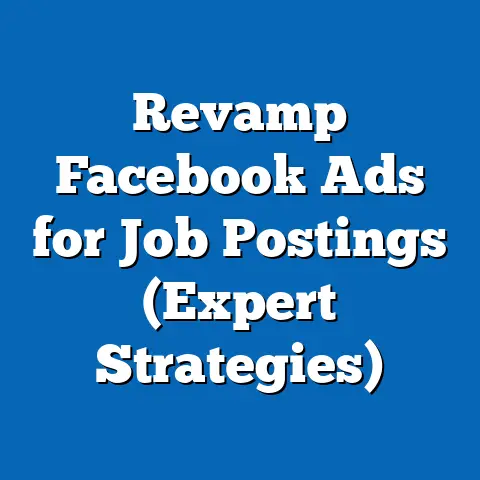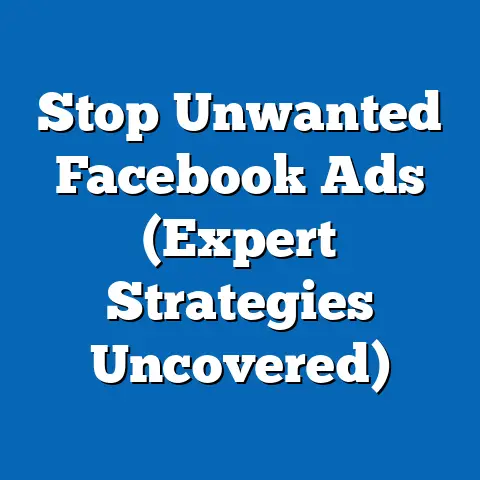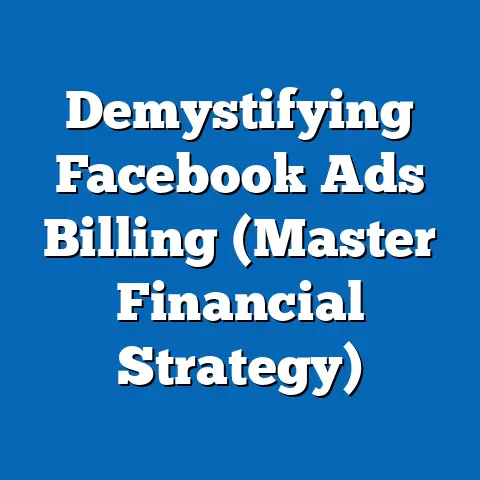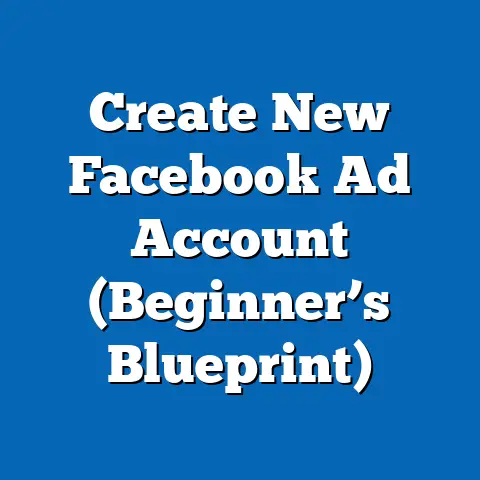Add Music to Facebook Story (Unlock Engagement Secrets)
I’ve always been fascinated by the power of storytelling. It’s how we connect, how we share experiences, and how we build communities. And in today’s digital age, social media platforms like Facebook have become our virtual campfires, where we gather to share our stories. But with so much content vying for attention, how do you make your story stand out? The answer, my friends, often lies in the subtle yet powerful art of adding music.
Think about it: a movie scene without a soundtrack feels…incomplete. The same principle applies to your Facebook Stories. Music adds an emotional layer, transforming a simple visual into a captivating experience. It’s not just about adding a catchy tune; it’s about selecting the right tune, the one that resonates with your audience and amplifies the message you’re trying to convey.
Section 1: The Rise of Facebook Stories
Remember the early days of Facebook? It was all about carefully curated profiles and meticulously crafted status updates. But times have changed, and so has the way we share our lives online. Enter: Facebook Stories.
Since its inception, Facebook Stories has become a dominant force in the social media landscape. Initially met with skepticism (many saw it as a blatant copy of Snapchat’s format), Stories quickly gained traction and evolved into a vital tool for both personal and professional communication.
So, what makes Stories so appealing?
- Ephemeral Nature: The 24-hour lifespan of a Story creates a sense of urgency and exclusivity, encouraging viewers to tune in before it disappears. This “fear of missing out” (FOMO) drives engagement.
- Authenticity: Stories often feel more raw and unfiltered than traditional posts, allowing users to present a more genuine version of themselves. This authenticity resonates with audiences seeking real connections.
- Visual Focus: Stories prioritize visual content, making them highly engaging and easy to consume. In a world saturated with information, visual storytelling is key to capturing attention.
The Numbers Don’t Lie:
According to Facebook’s own data, over 500 million people use Facebook Stories every day. That’s a massive audience! And it’s not just individuals; businesses are also leveraging Stories to connect with their customers. In fact, a study by Hootsuite found that 58% of people say they have become more interested in a brand or product after seeing it in a Story.
Stories vs. Traditional Posts:
While traditional posts still have their place, Stories offer a unique set of advantages:
- Higher Visibility: Stories appear at the top of the Facebook app, making them more prominent than regular posts.
- Interactive Features: Stories offer a range of interactive elements, such as polls, quizzes, and question stickers, that encourage audience participation.
- Direct Messaging: Stories allow viewers to easily message the creator directly, fostering a more personal connection.
The Takeaway:
Facebook Stories are a powerful tool for connecting with your audience in an authentic and engaging way. If you’re not already using them, you’re missing out on a significant opportunity. Next, I’ll delve into why music is so crucial for social media engagement.
Section 2: The Importance of Music in Social Media Engagement
Let’s face it: music is the soundtrack of our lives. It evokes emotions, triggers memories, and sets the mood. And when it comes to social media, music can be a game-changer.
The Psychology of Music:
Music has a profound impact on our brains. Studies have shown that listening to music releases dopamine, a neurotransmitter associated with pleasure and reward. This can lead to increased feelings of happiness, relaxation, and even motivation.
But the impact of music goes beyond just feeling good. It can also influence our perceptions and behaviors. For example, research has shown that people are more likely to make impulsive purchases when exposed to upbeat music.
Music and Engagement:
So, how does this translate to social media engagement? Simple: music can make your content more engaging, memorable, and shareable.
- Emotional Connection: Music can evoke specific emotions that resonate with your audience. A sad song can create empathy, while an upbeat track can generate excitement.
- Increased Interaction: Studies have shown that content with music tends to receive higher interaction rates (likes, shares, comments) than content without music.
- Brand Association: By carefully selecting music that aligns with your brand’s identity, you can create a strong association in the minds of your audience.
Genre Matters:
Not all music is created equal. Different genres evoke different emotions and appeal to different audiences.
- Upbeat Pop: Ideal for celebrations, product launches, and positive messages.
- Mellow Acoustic: Perfect for reflective moments, personal stories, and behind-the-scenes glimpses.
- Electronic Dance Music (EDM): Great for energetic content, workout videos, and party scenes.
- Classical Music: Suitable for sophisticated content, educational videos, and calming messages.
Case Studies:
Many brands and influencers have successfully leveraged music in their Facebook Stories to boost engagement.
- GoPro: GoPro often uses upbeat music in its action-packed videos to create a sense of excitement and adventure.
- National Geographic: National Geographic incorporates ambient music in its nature documentaries to enhance the viewing experience and evoke a sense of wonder.
- Nike: Nike uses motivational music in its workout videos to inspire viewers and encourage them to push their limits.
My Own Experience:
I remember working on a campaign for a local coffee shop. We decided to create a Facebook Story showcasing their new fall-themed drinks. Instead of just showing static images, we added a cozy, acoustic song in the background. The result? Engagement skyrocketed! People were commenting on the music, asking about the drinks, and even sharing the Story with their friends. It was a clear demonstration of the power of music to enhance the viewing experience.
The Takeaway:
Music is a powerful tool for enhancing social media engagement. By carefully selecting music that aligns with your content and brand, you can evoke emotions, increase interaction, and create a lasting impression on your audience. Next, I’ll walk you through the step-by-step process of adding music to your Facebook Story.
Section 3: How to Add Music to Your Facebook Story (Step-by-Step Guide)
Ready to start adding music to your Facebook Stories? Here’s a detailed, step-by-step guide to get you started:
Method 1: Using the Built-In Music Feature
This is the easiest and most common way to add music to your Facebook Story.
- Open the Facebook App: Launch the Facebook app on your smartphone or tablet.
- Create a New Story: Tap the “+ Add to Story” button at the top of your newsfeed.
- Capture or Upload Content: Either take a new photo or video, or select an existing one from your camera roll.
- Tap the Sticker Icon: Look for the sticker icon (usually a square with a folded corner) at the top of the screen.
- Select the “Music” Sticker: Scroll through the list of stickers and tap on the “Music” sticker.
- Browse or Search for Music: You’ll be presented with a library of songs to choose from. You can browse by genre, mood, or popularity, or use the search bar to find a specific track.
- Select a Song: Tap on the song you want to use.
- Choose a Snippet: You can select a specific portion of the song to play in your Story. Drag the slider to choose the starting point and adjust the length of the snippet.
- Customize the Sticker: You can customize the appearance of the music sticker by changing its color, size, and position. You can also choose to display the song title and artist name.
- Post Your Story: Once you’re happy with your creation, tap the “Share to Story” button.
Method 2: Adding Music Before Capturing Content
This method allows you to record a video with music playing in the background.
- Open the Facebook App: Launch the Facebook app on your smartphone or tablet.
- Create a New Story: Tap the “+ Add to Story” button at the top of your newsfeed.
- Swipe to the “Music” Option: At the bottom of the screen, you’ll see a row of options (e.g., “Camera,” “Text,” “Boomerang”). Swipe until you find the “Music” option.
- Browse or Search for Music: You’ll be presented with a library of songs to choose from. You can browse by genre, mood, or popularity, or use the search bar to find a specific track.
- Select a Song: Tap on the song you want to use.
- Adjust the Volume: Use the volume slider to adjust the volume of the music.
- Start Recording: Tap and hold the record button to start recording your video. The music will play in the background as you record.
- Add Stickers and Text: After recording, you can add stickers, text, and other effects to your Story.
- Post Your Story: Once you’re happy with your creation, tap the “Share to Story” button.
Tips for Selecting the Right Track:
- Consider Your Audience: What kind of music do your followers enjoy? Choose music that aligns with their tastes.
- Match the Mood: Select music that complements the mood and tone of your content.
- Keep it Relevant: Choose music that is relevant to your brand, product, or message.
- Don’t Overdo It: Avoid using music that is too loud or distracting. The music should enhance the viewing experience, not overwhelm it.
My Personal Trick:
I often use the “Save” feature in music streaming apps like Spotify or Apple Music to create playlists of songs that I think would be perfect for my Facebook Stories. This way, I have a collection of pre-approved tracks ready to go whenever inspiration strikes.
The Takeaway:
Adding music to your Facebook Story is a simple process that can have a significant impact on engagement. By following these step-by-step instructions and keeping these tips in mind, you can create Stories that are both engaging and memorable. Next, I’ll share some creative ideas for using music in your Stories.
Section 4: Creative Ideas for Using Music in Your Stories
Now that you know how to add music to your Facebook Story, let’s explore some creative ways to use it. The possibilities are endless, but here are a few ideas to get you started:
1. Travel Stories:
- Theme: Share your travel adventures with a fitting soundtrack.
- Music: Upbeat pop for exploring new cities, mellow acoustic for relaxing on the beach, or world music for immersing yourself in local culture.
- Example: A video of you hiking in the mountains with an inspiring instrumental track playing in the background.
2. Product Launches:
- Theme: Hype up your new product with an exciting musical backdrop.
- Music: Upbeat pop or electronic music to generate excitement and anticipation.
- Example: A short video showcasing your new product with a catchy jingle or a trending song.
3. Behind-the-Scenes Glimpses:
- Theme: Give your audience a peek behind the curtain with a relatable soundtrack.
- Music: Mellow acoustic or indie music to create a sense of intimacy and authenticity.
- Example: A video of you working on a project in your studio with a chill instrumental track playing in the background.
4. User-Generated Content:
- Theme: Showcase your fans’ creations with a collaborative soundtrack.
- Music: Ask your followers to suggest songs that fit the theme of their content.
- Example: A compilation of your fans’ photos or videos with a playlist of their suggested songs playing in the background.
5. Interactive Music Features:
- Theme: Engage your audience with polls, quizzes, and question stickers related to music.
- Music: Use different genres of music to represent different options in your polls or quizzes.
- Example: A poll asking your followers to choose their favorite song from a particular artist.
6. Live Performances:
- Theme: Share your musical talents with the world.
- Music: Perform live covers of your favorite songs or showcase your original compositions.
- Example: A live video of you playing the guitar and singing a song for your followers.
7. Mash-Ups:
- Theme: Create a unique and unexpected musical experience.
- Music: Combine different genres of music to create a mash-up that reflects your personality and style.
- Example: A video of you dancing to a mash-up of pop and classical music.
8. Curated Playlists:
- Theme: Share your favorite songs with your followers.
- Music: Create playlists of songs that fit a specific theme or mood.
- Example: A playlist of songs that are perfect for studying, working out, or relaxing.
My Favorite Strategy:
I love using music to create a sense of nostalgia in my Facebook Stories. I’ll often use songs from my childhood or songs that remind me of specific memories. This helps me connect with my audience on a deeper level and create a sense of shared experience.
The Takeaway:
The key to using music effectively in your Facebook Stories is to be creative and experiment with different ideas. Don’t be afraid to try new things and see what resonates with your audience. Next, I’ll discuss how to measure the impact of music on engagement.
Section 5: Measuring the Impact of Music on Engagement
Adding music to your Facebook Stories is a great way to enhance engagement, but how do you know if it’s actually working? That’s where metrics come in. By tracking and analyzing the engagement metrics of your Stories, you can gain valuable insights into what’s resonating with your audience and optimize your approach accordingly.
Key Performance Indicators (KPIs):
Here are some key metrics to monitor when measuring the impact of music on engagement:
- Reach: The number of unique people who have viewed your Story.
- Impressions: The total number of times your Story has been viewed.
- Interaction Rate: The percentage of people who have interacted with your Story (e.g., liked, commented, shared, clicked on a link).
- Viewer Retention: The percentage of people who have watched your Story from beginning to end.
- Replies: The number of direct messages you’ve received in response to your Story.
- Website Clicks: If you’ve included a link in your Story, the number of clicks it has received.
Tools and Techniques:
Facebook provides built-in analytics tools that allow you to track the performance of your Stories. To access these tools, simply tap on your profile picture in the Facebook app and then tap on “Archive.” From there, you can view the insights for each of your past Stories.
In addition to Facebook’s built-in analytics, you can also use third-party tools like Hootsuite or Buffer to track your Story performance. These tools offer more advanced features, such as the ability to track engagement over time and compare the performance of different Stories.
A/B Testing:
One of the best ways to determine what kind of music resonates with your audience is to conduct A/B tests. This involves creating two versions of the same Story with different music tracks and then comparing their performance.
For example, you could create one version of a Story with an upbeat pop song and another version with a mellow acoustic track. Then, you could track the engagement metrics of each version to see which one performs better.
Interpreting the Data:
Once you’ve collected data on your Story performance, it’s time to interpret the results. Here are some things to look for:
- Trends: Are there any patterns in your data? For example, do Stories with upbeat music consistently perform better than Stories with mellow music?
- Outliers: Are there any Stories that performed significantly better or worse than expected? What factors might have contributed to this?
- Correlations: Are there any correlations between the type of music you use and the engagement metrics of your Stories?
My Personal Approach:
I like to create a spreadsheet to track the performance of my Facebook Stories. I include columns for reach, impressions, interaction rate, viewer retention, replies, and website clicks. This allows me to easily compare the performance of different Stories and identify trends over time.
The Takeaway:
Measuring the impact of music on engagement is essential for optimizing your Facebook Story strategy. By tracking key metrics, conducting A/B tests, and interpreting the data, you can gain valuable insights into what’s working and what’s not.
Conclusion
Adding music to your Facebook Stories is more than just a fun gimmick; it’s a strategic way to unlock engagement and connect with your audience on a deeper level. As I’ve shown throughout this guide, music has the power to evoke emotions, increase interaction, and create a lasting impression.
From understanding the rise of Facebook Stories to mastering the step-by-step process of adding music, you’re now equipped with the knowledge and tools you need to transform your mundane Stories into unforgettable moments.
So, embrace your creativity, experiment with different genres and styles, and don’t be afraid to push the boundaries of storytelling. The world of Facebook Stories is your canvas, and music is your brush.
I encourage you to start experimenting with music in your next Facebook Story and share your experiences with me. What kind of music did you use? How did it impact engagement? I’m eager to hear your stories and learn from your insights.
Remember, the key to success on social media is to be authentic, engaging, and always willing to learn. By incorporating music into your Facebook Stories, you’re taking a step in the right direction. Now go out there and create some magic!





